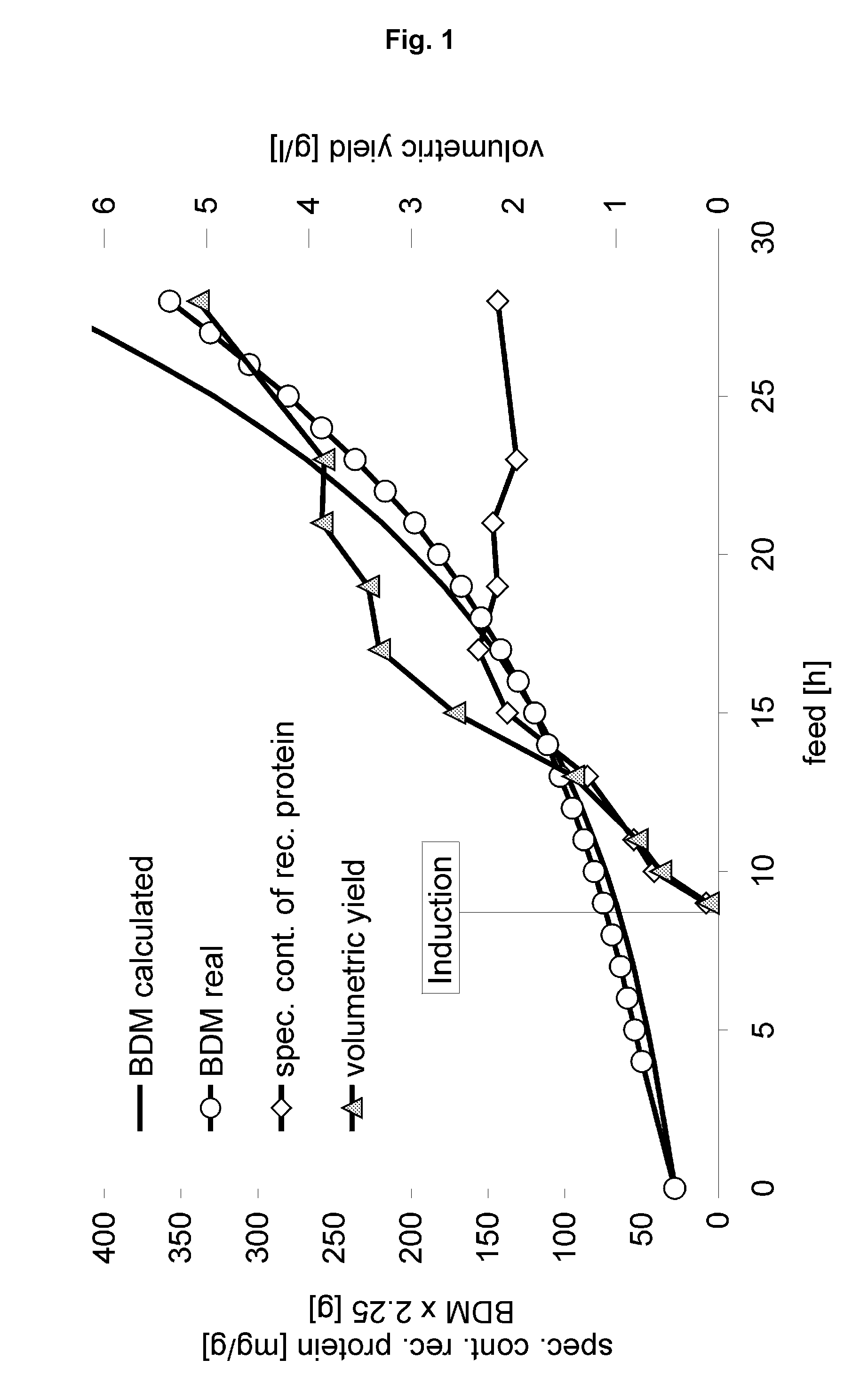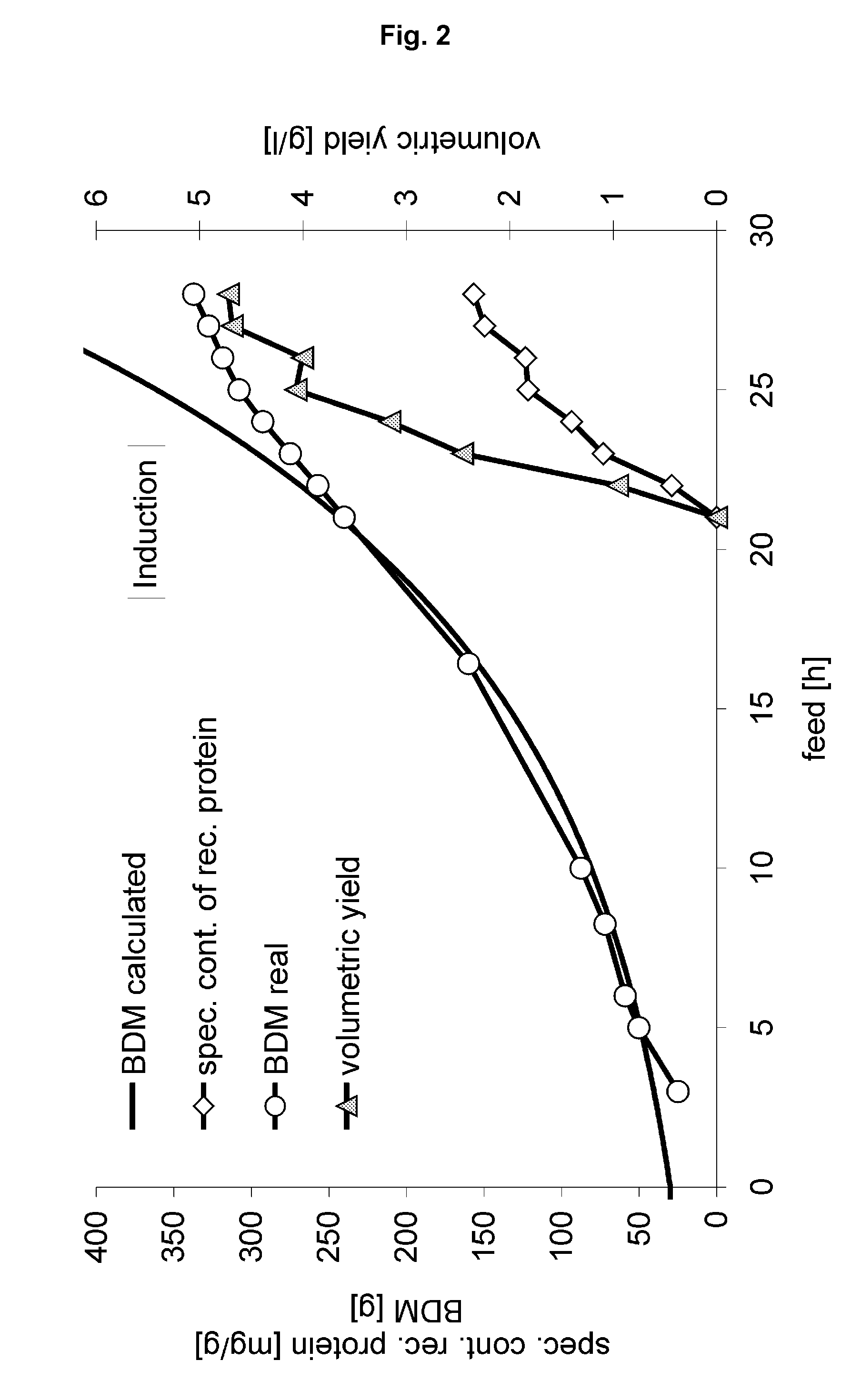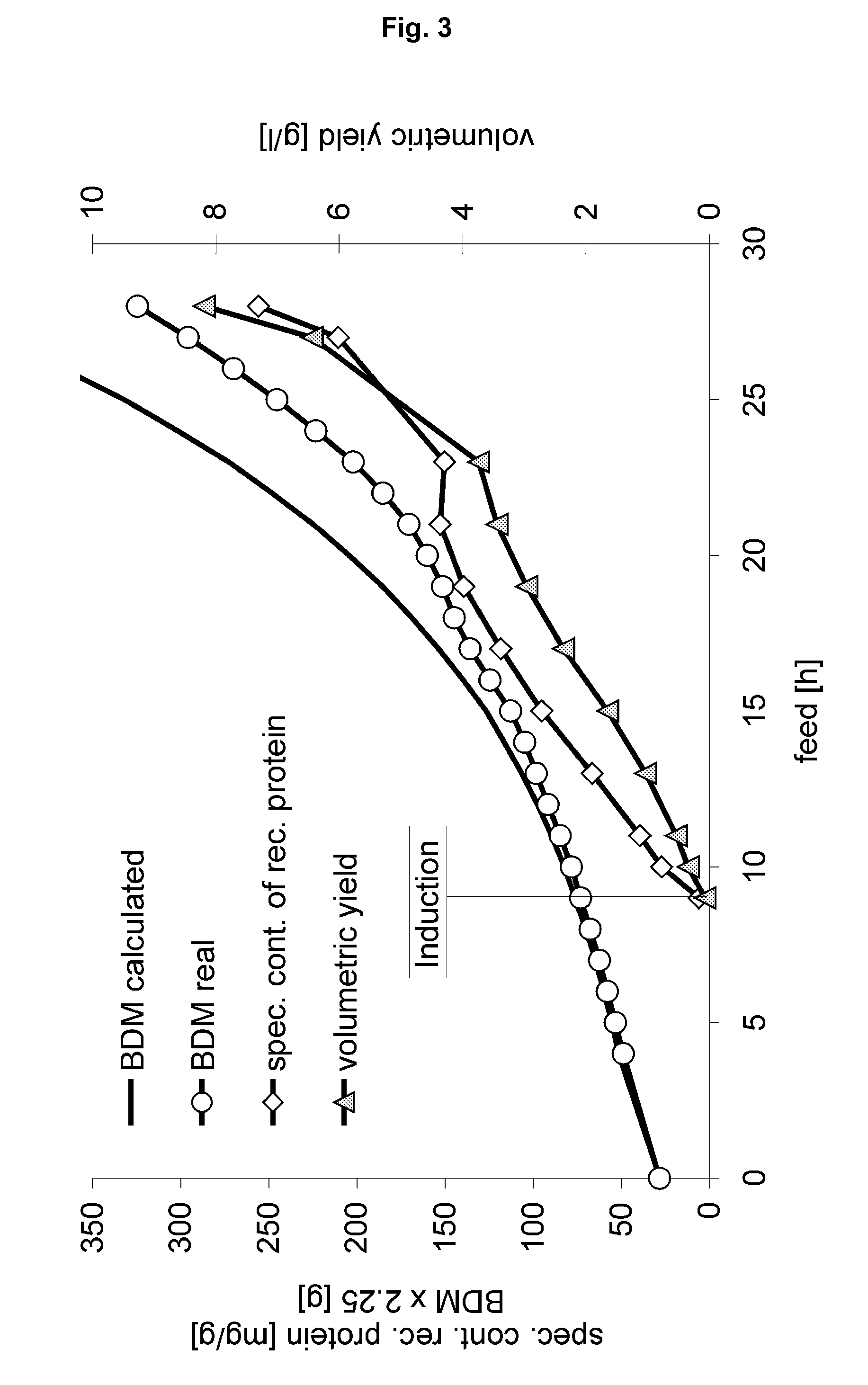Method for producing a recombinant protein on a manufacturing scale
a manufacturing scale and recombinant protein technology, applied in the field of recombinant protein production on the manufacturing scale, can solve the problems of limiting the resources of recombinant protein production, high metabolic burden on the cells, and rapid and irreversible breakdown of the cell metabolism
- Summary
- Abstract
- Description
- Claims
- Application Information
AI Technical Summary
Benefits of technology
Problems solved by technology
Method used
Image
Examples
example 1
Generation of Bacterial Strains and Description of Recombinant Proteins
[0131]Experiments are performed either with the recA− K12 strain E. coli HMS174 (DE3) or with the B-strain BL21 (DE3) provided by Novagen. The designation (DE3) indicates that the hosts are lysogens of λ DE3 prophage, carrying a chromosomal copy of the T7 RNA polymerase gene under control of the lacUV5 promoter, making these strains suitable for protein expression using T7 or T7 lac promoters (Studier and Moffat, 1986; Studier et al., 1990). Integration of linear DNA cartridges into the bacterial chromosome is done in E. coli MG1655 carrying the Red helper plasmid pKD46 as described by Datsenko and Wanner (2000). The linear expression cartridge is integrated into the attTn7 site, which is between the glmS gene and the pstS gene at the genome of E. coli. PCR verification of cassettes on the genome is done by combining external primers annealing to the genome and internal primers. By P1 transduction (Sternberg and ...
example 2
Cultivation Mode and Process Analysis
[0134]The cells are grown either in a 7 L (5 L net volume, 2.5 L batch volume) or in a 20 L (12 L net volume, 8 L batch volume) computer-controlled bioreactor (MBR; Wetzikon, CH) equipped with standard control units. The pH is maintained at a set-point of 7.0±0.05 by addition of 25% ammonia solution (ACROS Organics), the temperature is set to 37° C.±0.5° C. In order to avoid oxygen limitation, the dissolved oxygen level is stabilized above 30% saturation by stirrer speed and aeration rate control. The content of O2 and CO2 in the outlet air is determined by a Hartmann and Braun Advanced Optima gas analyzer. Dielectric capacity and conductivity are measured with the Biomass monitor, model 214M (Aber Instruments, Aberystwyth, UK) set. Fluorescence measurements are performed using a multi-wavelength spectrofluorometer specially designed for online measurements in an industrial environment, the BioView® (DELTA Light & Optics, Lyngby, Denmark). Foamin...
example 3
Expression of 6xHis-NproEddie-GFPmut3.1 as Insoluble Inclusion Body with E. coli HMS174 (DE3) in the Fed-Batch Mode
[0143]Expression systems ES1 and ES4 listed in Table 1 are used in order to characterize the behaviour of the expression system of the invention (ES4) for production of insoluble target proteins (i.e. as inclusion bodies), and to evaluate the economic potential compared to plasmid based expression systems (ES1). The experiment with the expression system of the invention shows high but physiologically tolerable gene expression rates. The product formation can be maintained for more than 20 hours. Induction is performed as single pulse one doubling past feed start in order to gain a fully induced system (FIG. 1).
[0144]In contrast to these results, the gene expression rate triggered by the plasmid based expression system overstrains the metabolic capacities of the cells and lead to the breakdown of the cellular system four hours past induction, performed as single IPTG pul...
PUM
| Property | Measurement | Unit |
|---|---|---|
| Dimensionless property | aaaaa | aaaaa |
| Dimensionless property | aaaaa | aaaaa |
| Concentration | aaaaa | aaaaa |
Abstract
Description
Claims
Application Information
 Login to View More
Login to View More - R&D
- Intellectual Property
- Life Sciences
- Materials
- Tech Scout
- Unparalleled Data Quality
- Higher Quality Content
- 60% Fewer Hallucinations
Browse by: Latest US Patents, China's latest patents, Technical Efficacy Thesaurus, Application Domain, Technology Topic, Popular Technical Reports.
© 2025 PatSnap. All rights reserved.Legal|Privacy policy|Modern Slavery Act Transparency Statement|Sitemap|About US| Contact US: help@patsnap.com



